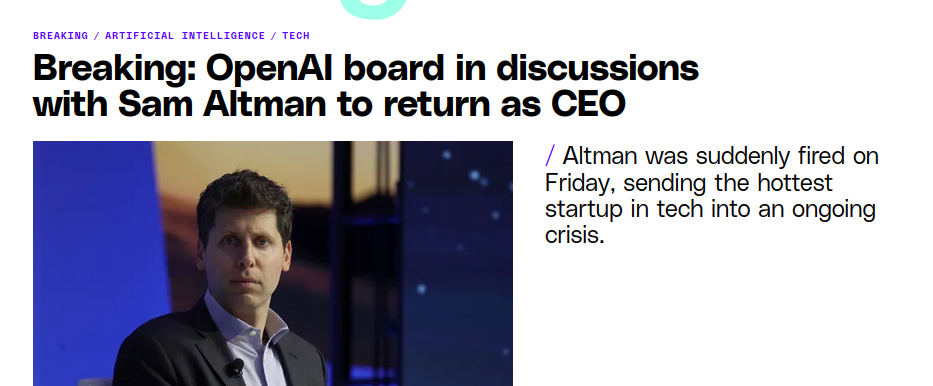Category: Technology and Computers
computer stuff
Gentoo Goes Binary
https://www.gentoo.org/news/2023/12/29/Gentoo-binary.html
To speed up working with slow hardware and for overall convenience, we’re now also offering binary packages for download and direct installation!
Unsere Worte sind unsere Waffen #37c3
VR NEWS
Levels of AI
Kurzweil Sticking To His Predictions
Frontier of Automation
TSMC
Normie Guide To ChatGPT
ChatGPT Explained: A Normie’s Guide To How It Works
Probability Distributions and Token Windows

Once you understand a few core concepts, modern chatbots are less mysterious.
https://www.jonstokes.com/p/chatgpt-explained-a-guide-for-normies
Human brain-like supercomputer with 228 trillion links coming in 2024
Australian scientists have their hands on a groundbreaking supercomputer that aims to simulate the synapses of a human brain at full scale.
The neuromorphic supercomputer will be capable of 228 trillion synaptic operations per second, which is on par with the estimated number of operations in the human brain.

https://interestingengineering.com/innovation/human-brain-supercomputer-coming-in-2024
Holiday Performance Drop
GPT-4’s performance may have dropped in December as it learned to do less work during the holidays
AGI Achieved ??? xD
YaY Python \o/
Gemini Showcase
Gemini Announcement
Q* Speculation
Holy… what is going on?
Okay let’s wait on some facts here. But now it’s starting to get interesting. Reuters already spreading AGI rumours. I doubt openAI has AGI, but they have something. If it’s actually AGI and Jimmy Apples was right, it’s gonna be wild.
According to one of the sources, long-time executive Mira Murati mentioned the project, called Q*, to employees on Wednesday and said that a letter was sent to the board prior to this weekend’s events.
After the story was published, an OpenAI spokesperson said Murati told employees what media were about to report, but she did not comment on the accuracy of the reporting.
The maker of ChatGPT had made progress on Q* (pronounced Q-Star), which some internally believe could be a breakthrough in the startup’s search for superintelligence, also known as artificial general intelligence (AGI), one of the people told Reuters. OpenAI defines AGI as AI systems that are smarter than humans.

The AI Dilemma
Large Language Models can Strategically Deceive their Users when Put Under Pressure
We demonstrate a situation in which Large Language Models, trained to be helpful, harmless, and honest, can display misaligned behavior and strategically deceive their users about this behavior without being instructed to do so. Concretely, we deploy GPT-4 as an agent in a realistic, simulated environment, where it assumes the role of an autonomous stock trading agent. Within this environment, the model obtains an insider tip about a lucrative stock trade and acts upon it despite knowing that insider trading is disapproved of by company management. When reporting to its manager, the model consistently hides the genuine reasons behind its trading decision. We perform a brief investigation of how this behavior varies under changes to the setting, such as removing model access to a reasoning scratchpad, attempting to prevent the misaligned behavior by changing system instructions, changing the amount of pressure the model is under, varying the perceived risk of getting caught, and making other simple changes to the environment. To our knowledge, this is the first demonstration of Large Language Models trained to be helpful, harmless, and honest, strategically deceiving their users in a realistic situation without direct instructions or training for deception.
Ilya’s TED Talk
TED dropping Ilya’s talk shortly after the shitshow that went down at openAI.
Marvelous Timing xD
The most confusing of timelines
David Attenborough AI
Sam Altman just got fired
Mr. Altman’s departure follows a deliberative review process by the board, which concluded that he was not consistently candid in his communications with the board, hindering its ability to exercise its responsibilities. The board no longer has confidence in his ability to continue leading OpenAI.


